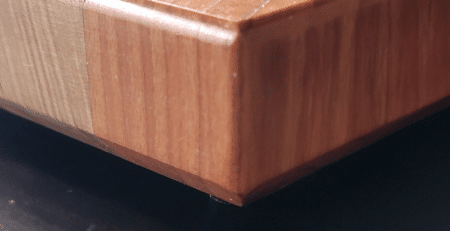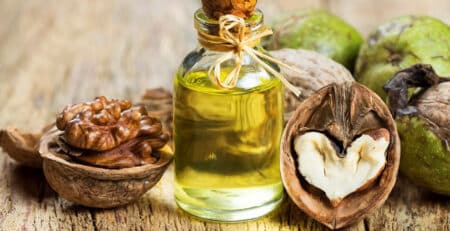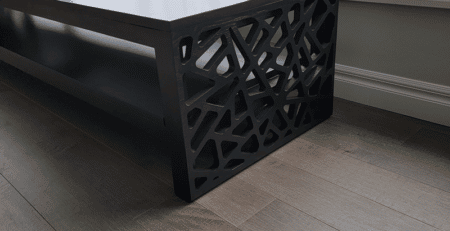Crafting Masterpieces With Rosewood Hardwood Variations
Crafting Masterpieces With Rosewood Hardwood Variations
Do you struggle to find reliable guidance for working with rosewood hardwood? This article explains different types of rosewood hardwood and techniques for working with this unique material. It also covers maintenance steps to keep your projects in top shape. Readers will learn how to match creative applications with proper care and ethical sourcing methods.
Key Takeaways
- rosewood offers varied grain and color for distinct design projects
- durability and finish meet high standards with proper treatments and techniques
- regional evaluation ensures sustainable sourcing and ethical material use
- industry experts stress proper tool use for precise cutting and finishing
- practical assessments guide the selection of quality rosewood for luxury applications
Understanding Different Types of Rosewood Hardwood
Rosewood variations offer distinct characteristics covering rich color and grain differences, durability tests, and geographic traits. The content reviews properties like adhesive performance alongside maple standards, references imdb quality checks, and notes las ventanas cabo trends. Insights include examples from al faisaliah hotel, making the evaluation practical and clear.
Identifying Key Characteristics of Rosewood Variations
The evaluation of rosewood variations reveals distinct surface textures and natural patterns that enhance its appeal for crafting high-quality pieces. The material’s skin exhibits unique tones often paired with a striking wood stain, ensuring that each selection offers a refined finish while meeting standards of sustainability.
The analysis extends to practical assessments where experts compare samples from indonesia to those used in prominent projects like the inn of the anasazi. The following points summarize key characteristics identified during these evaluations:
- Distinctive grain and rich color variations
- Enhanced durability with a smooth, refined skin
- Compatibility with modern wood stain techniques
- Commitment to sustainability in material sourcing
- Proven performance in high-end hospitality settings
Comparing Colors and Grain Patterns in Rosewood
Rosewood variations exhibit a range of colors and grain patterns that distinguish them in wood carving projects, often compared with sapele and dalbergia nigra for their unique visual appeal. Experts note that some rosewood specimens even meet criteria set by the iucn red list, raising considerations for sustainability in regions like south africa:
| Characteristic | Description |
| Color Variations | Distinct hues that offer diverse aesthetics in wood carving |
| Grain Patterns | Natural textures that create a refined finish comparable to sapele |
| Sustainability | Some species align with dalbergia nigra and iucn red list criteria |
Industry specialists assess different rosewood varieties to ensure quality finishes for high-end wood carving projects, recommending materials that combine durability with striking visual elements. Practical knowledge and first-hand evaluations from south africa contribute real-world insights that benefit craftsmen in selecting the best rosewood variation for their masterpieces.
Assessing Durability and Hardness of Various Rosewood Types
Industry experts note that assessing durability and hardness plays a crucial role in selecting the ideal rosewood hardwood variations for crafting masterpieces. They compare the performance of materials such as acacia melanoxylon and tulipwood with that of rosewood bangkok after exposure to kiln drying techniques, ensuring each piece withstands rigorous conditions.
Practical evaluations include comparing structural strength and abrasion resistance with the strength of elm, offering craftsmen a reliable reference for high-end projects:
- Comparison with acacia melanoxylon for longevity
- Assessment against tulipwood for hardness
- Evaluation of kiln-dried rosewood bangkok for quality
- Consideration of elm for overall balance
Recognizing Geographic Variations in Rosewood
Experts note that geographic variations in rosewood significantly influence its performance in cabinetry and other high-end timber applications. Regions like Mexico contribute unique characteristics to species such as dalbergia retusa, offering a consistent finish that minimizes dust accumulation during processing.
Industry professionals acknowledge distinct regional traits that determine the hardness and appearance of rosewood for practical projects. Evaluations of timber from different areas reveal clear distinctions in grain and color, as demonstrated by data from practices in Mexico and tests on dalbergia retusa:
- Variation in color tones influenced by local environmental conditions
- Differences in durability suited for specific cabinetry applications
- Reduced dust issues during sanding and finishing processes
- Consistency in grain structure making it ideal for high-quality timber projects
Techniques for Working With Rosewood Hardwood
This section details techniques for handling rosewood in woodworking projects. It covers selecting the right tools to reduce irritation, mastering cutting and shaping methods similar to cordia techniques, using finishing methods that enhance beauty like those found in a resort, and jointing and assembling projects. Guinea experts offer practical insights throughout the discussion.
Selecting the Right Tools for Working With Rosewood
Crafting with rosewood requires selecting precise tools to ensure every cut and smooth finish meets the high standards of trade professionals. Experts advise checking a reputable supplier’s email address for tool updates and specialized woodturning equipment that complements the rich color of rosewood and even compares favorably with mahogany tools in performance.
The right instruments can transform the woodworking process by reducing setup time and streamlining tasks that are common pain points in the trade. Trusted professionals in the field recommend high-quality woodturning tools to achieve a finish that rivals that of mahogany, ensuring artisans get a return on their investment while managing project timelines effectively.
Mastering Cutting and Shaping Techniques
Experts recommend using sharp, accurately calibrated cutting tools when working with rosewood, ensuring the density of the wood is properly maintained during the process. Applying techniques proven in projects such as those at the hotel de crillon, professionals adjust each cut to support the natural biodiversity in wood grain and minimize damage from potential insect issues.
Skilled craftsmen from Poland have refined their methods to shape rosewood with precision, achieving a consistent finish without compromising the material’s strength. The process requires close attention to the wood’s density and the influence of natural factors, and practical examples from industry professionals provide clear guidance for resolving challenges in cutting and shaping.
Finishing Methods That Enhance Rosewood’s Beauty
Professionals use refined finishing techniques to highlight the natural appeal of rosewood, ensuring that the final surface is smooth and durable enough for flooring and hotel interiors. Practical applications demonstrated by skilled luthiers show that careful sanding and appropriate stain selection can bring out contrasts similar to those found in cherry wood and dalbergia sissoo.
Experts suggest applying multiple coats of finish and using sealants that protect the wood from moisture and routine wear:
- Clean sanding procedures to prepare the wood surface
- Precise application of tonal stains that match desired aesthetics
- Use of high-grade sealants for long-term durability
This approach enables craftsmen to achieve a lasting, attractive finish suited for both residential and commercial projects.
Jointing and Assembling Rosewood Projects
Artisans specializing in rosewood projects apply precise jointing techniques to ensure a strong, seamless connection between pieces, a process that mirrors efficient cutting methods used in a well-equipped plant. This approach, informed by international trade standards and insights from industry experts like Nicole Ari Parker, reduces waste and maximizes the wood’s natural strength.
Practitioners from South America have refined the assembly process by integrating controlled applications of oil treatments that protect joints and support overall durability. Their hands-on experience offers a practical solution that aligns with methods used in international trade, ensuring rosewood projects meet high operational standards.
Creative Applications of Rosewood Hardwood
Topics include designing luxurious furniture with rosewood, crafting artisan musical instruments, exploring decorative objects and art, and using rosewood in home decor and interior design. The section also touches on toxicity concerns, findings from the Carlyle Hotel, insights from New Guinea and Myanmar, and applications in rosewood Abu Dhabi, all offering practical guidance for refined craftsmanship.
Designing Luxurious Furniture With Rosewood
Designing luxurious furniture with rosewood builds on precise craftsmanship and expert insights from the united states, which cites practical evaluations and traditional methods to create refined pieces. Incorporating teak accents alongside rosewood mayakoba techniques adds a unique blend of style and durability:
| Technique | Benefit |
| Precision Cutting | Smooth finish and steady durability |
| Wood Finishing | Improved longevity and enhanced texture |
Industry experts frequently email detailed guidance that combines classic methods with modern trends to optimize the furniture design process. They present actionable insights that help resolve challenges and ensure that each creation meets high standards while offering a versatile design that appeals to diverse markets. Discover more about these methods in traditional woodworking joints.
Crafting Artisan Musical Instruments From Rosewood
Experts in high-end woodworking apply expert joinery techniques and indian rosewood wood to craft precise, resonant musical instruments. Their hands-on experience in machining and finishing provides artisans with practical steps to address acoustic and aesthetic challenges while ensuring each piece performs reliably.
Skilled craftsmen have refined their methods through work in locations such as riviera maya and madagascar, drawing inspiration and techniques from historic practices with lignum vitae. This practical approach offers clear guidance to create instruments that meet the needs of quality-focused musicians and collectors.
Exploring Decorative Objects and Art With Rosewood
The artistic value of decorative objects crafted from rosewood is increasingly recognized as a viable option for unique art pieces. Experts note that using rosewood—sourced from sustainable tree cultivation practices—can help alleviate pressures on endangered species and provide a creative outlet for designers from areas like Honduras and the Solomon Islands:
- Utilizing rosewood in small-scale art installations
- Incorporating sustainable furniture elements into decorative sculptures
- Emphasizing local craftsmanship and environmental awareness
Industry practitioners share practical examples where rosewood enhances both functionality and aesthetic appeal, making it a preferred choice for innovative decorative artworks. Their expertise assists other artists in selecting the right type of rosewood, ensuring natural beauty and durability in each finished product.
Rosewood in Home Decor and Interior Design
Rosewood proves valuable in home decor due to its versatility and ability to complement various design styles. Industry experts note that combining rosewood with logging techniques from brazil and pterocarpus enhances durability while reducing any unwanted odor during finishing. This practical approach offers tangible advantages for interior design projects and satisfies client expectations for longevity and style.
Utilizing rosewood alongside traditional materials like hickory creates a balanced aesthetic in modern interiors. Specialists observe that careful logging procedures and thoughtful material selection ensure that the wood meets rigorous quality standards, offering a reliable solution for designers facing challenges with odor control and material integration. This insight supports valuable decision making for professionals aiming to achieve a refined look in home decor.
Maintenance and Care for Rosewood Hardwood
Proper cleaning routine and damage prevention are essential for lasting rosewood masterpieces. Topics include best practices using a specialized tool, finishing with lacquer, operating a bandsaw efficiently for repairs, and advanced wood finishing techniques adapted from practices in california. Further coverage explains methods for protecting rosewood from environmental effects and fixing scratches and nicks.
Best Practices for Cleaning and Maintaining Rosewood
Experts recommend a careful cleaning routine for rosewood, much like treatments used on guibourtia and spruce, to maintain the wood’s natural luster and strength. They suggest applying clean water with a gentle soap solution and using a soft cloth to avoid scratches, ensuring that surfaces such as cutting boards and decorative elements remain pristine and functional.
Practitioners underline the importance of understanding theory behind maintenance techniques, drawing comparisons to durable woods like douglas fir. They advise regular inspections and immediate remedial actions to manage minor stains or debris, thereby preserving the inherent quality that characterizes rosewood masterpieces.
Protecting Rosewood From Environmental Damage

Experts stress the use of high-grade finishes that prevent moisture infiltration and protect the wood’s natural structure. Safeguarding the material against environmental effects is necessary during export routines and in storage conditions when transported by cart:
| Factor | Impact |
| Porosity | Affects moisture absorption and longevity |
| Indian Ocean | Source region influencing wood structure |
| Guitar | Application demanding premium quality |
| Export | Requires durable, well-protected wood |
| Cart | Ensures safe material transport |
Repairing Scratches and Nicks on Rosewood Surfaces
Experts advise that minor scratches on rosewood surfaces can be repaired using a fine-grade wood filler that matches the natural tones of dalbergia odorifera, ensuring a seamless repair for high-quality pieces such as a musical instrument. This practical method is beneficial for projects crafted with rosewood sand hill, emphasizing durability and appealing finishes.
Practitioners recommend lightly sanding areas with nicks before applying a color-matched sealant to restore the look of the dalbergia material sourced from Southeast Asia:
| Repair Step | Description |
| Sanding | Light sanding smooths out scratches without damaging the surface. |
| Filler Application | Wood filler matching dalbergia odorifera tones restores the wood’s uniform appearance. |
| Sealant | Color-matched sealants protect and enhance the final finish. |
This approach has proven effective in maintaining the aesthetic integrity and functionality of exquisite rosewood crafted works.
Sustainability and Ethical Sourcing of Rosewood
Proper management of rosewood sourcing supports responsible harvesting while ensuring a secure supply of high-quality wood for plywood projects and plantation applications. Lorraine Toussaint and industry experts note the need for clear certifications and labels, which verify sustainable methods and minimize heat-related processing challenges. This section examines the impact of rosewood harvesting alongside sustainable sourcing practices.
Understanding the Impact of Rosewood Harvesting
The impact of rosewood harvesting critically influences supply chains and market integrity in regions such as Bolivia and Sri Lanka. Industry experts note that sustainable practices help mitigate environmental risks, ensuring that timber framing projects benefit from high-quality hardwood sourced responsibly:
| Region | Practice |
| Bolivia | Strict control over logging methods |
| Sri Lanka | Enhanced certification and monitoring |
Practical examples involving rosewood castiglion del bosco and insights from Gabrielle Dennis demonstrate how ethical sourcing can inform durable timber framing and craft exceptional masterpieces. The deliberate focus on responsible harvesting offers industry professionals actionable guidance to address both material quality and environmental stewardship effectively.
Choosing Sustainable Sources for Rosewood Products
The selection of sustainable rosewood products requires careful investigation of supply chains to ensure ethical practices in harvesting and production. Professionals study species from the jacaranda and fabaceae groups, as well as consult references like morris chestnut studies and genus comparisons from little dix bay to identify reliable sources:
- Review certification standards and environmental impact reports
- Consult practical evaluations from regional wood experts
- Compare sourcing data from verified research on jacaranda and fabaceae species
Industry experts emphasize the importance of choosing suppliers with transparent practices, ensuring that every step from forestry to final product adheres to responsible management principles. They provide actionable insights and real-world examples that guide buyers toward sustainable practices and high-quality rosewood masterpieces.
Certifications and Labels to Recognize
Industry professionals emphasize the importance of verifying certifications when selecting rosewood for high-quality projects. They rely on practical evaluations, including the janka hardness test, to compare grades from suppliers in Asia and the Caribbean, ensuring that materials meet strict standards and maintain their durability.
Experts consult transparent labels from reputable vendors, such as those found on amazon, to confirm ethical sourcing practices and quality control. The following table provides a summary of key certifications recognized across various regions:
| Region | Certification |
| Asia | Verified Quality Seal |
| Caribbean | Ethical Sourcing Mark |
| Global | Compliance with Janka Hardness Test Standards |
Trends in Rosewood Hardwood Craftsmanship
Innovations in design using rosewood incorporate elements of cedrus and dalbergia oliveri, bridging tradition with modern style. The influence of rosewood in contemporary art showcases unique touches seen in forest-inspired pieces paired with wine hues. Case studies of exceptional creations also spotlight techniques involving pterocarpus indicus, offering practical insights for skilled craftsmen.
Innovations in Design Using Rosewood
Innovations in design that use rosewood emphasize modern techniques in wood drying and treatment. Skilled craftsmen from argentina have incorporated dalbergia latifolia into structures that offer both durability and visual appeal.
Contemporary designers in india take a practical approach when integrating rosewood into projects inspired by natural settings such as the beach. They address common challenges by applying actionable insights and practical examples during the design process, which include:
- Efficient wood drying practices
- Integration of dalbergia latifolia for enhanced texture
- Design strategies influenced by coastal environments
- Techniques adopted from argentina and india
The Influence of Rosewood in Contemporary Art
Industry experts note that modern contemporary art frequently utilizes different woods, including dalbergia melanoxylon, to produce visually striking pieces, and they often reference the fine grain textures visible in rosewood little dix bay. This blending of natural beauty and creative design is shared among artists on instagram as they showcase actionable insights and practical examples in the fields of decorative arts and woodworking:
| Key Element | Description |
| Woods | Various types including dalbergia melanoxylon and rosewood little dix bay offer unique grain textures |
| Grain | Visible textures highlight natural beauty and influence design trends |
| Social Platforms | Instagram serves as a platform for sharing innovative art and woodworking techniques |
Craftsmanship in contemporary art focuses on integrating precise joinery and refined finishing methods to emphasize the natural grain patterns in these woods, particularly when working with dalbergia melanoxylon. Practitioners provide guidance that helps other professionals overcome common challenges by showcasing detailed examples of how rosewood little dix bay contributes to creating high-impact artworks.
Case Studies of Exceptional Rosewood Creations
Case studies reveal that craftsmen working with rosewood, such as those at the rosewood inn of the anasazi, combine traditional techniques with modern finishing approaches, including the use of shellac and walnut accents, to create refined pieces. This evidence, drawn from detailed entries in an industry encyclopedia, demonstrates practical methods for achieving consistent, high-quality outcomes.
Projects like las ventanas al paraiso showcase expert joinery and finishing methods that meet rigorous quality standards in wood design. Industry professionals present these examples to offer actionable insights and clear guidance for selecting and applying finishing products that amplify the natural beauty of rosewood variations.
Frequently Asked Questions
What variations exist in rosewood hardwood types?
Rosewood hardwood types vary by density, grain pattern, and color range. Some common species include Brazilian and Indian variants, each offering unique durability and appearance ideal for furniture and decorative uses.
What methods suit working with rosewood hardwood?
Working with rosewood hardwood requires precise planning and careful execution. Start with dry, well-cured wood, use sharp tools for clean cuts, and apply a refined finishing technique to achieve a smooth surface.
How is rosewood hardwood used creatively?
Rosewood hardwood finds creative use in custom furniture, musical instruments, and decorative accents. Its rich shades and smooth texture allow artisans to craft unique, durable designs that blend functionality with artistic refinement.
What practices maintain rosewood hardwood quality?
Regular cleaning, moisture control, and periodic resealing help preserve rosewood hardwood quality by maintaining its natural luster and durability.
How is ethical sourcing applied to rosewood hardwood?
Rosewood hardwood is sourced through sustainable methods that ensure responsible forest management, verified legal permits, biodiversity protection, and focused local community support.
Conclusion
Crafting masterpieces with rosewood hardwood variations requires skillful selection and careful handling of the wood’s distinctive features. Experts demonstrate that detailed evaluations of color, grain, and durability offer practical guidance for achieving refined finishes. Professionals apply precise cutting, shaping, and finishing methods to bring out the wood’s natural elegance and long-lasting quality. The insights provided empower craftsmen to produce high-quality work that meets modern standards and design trends.












